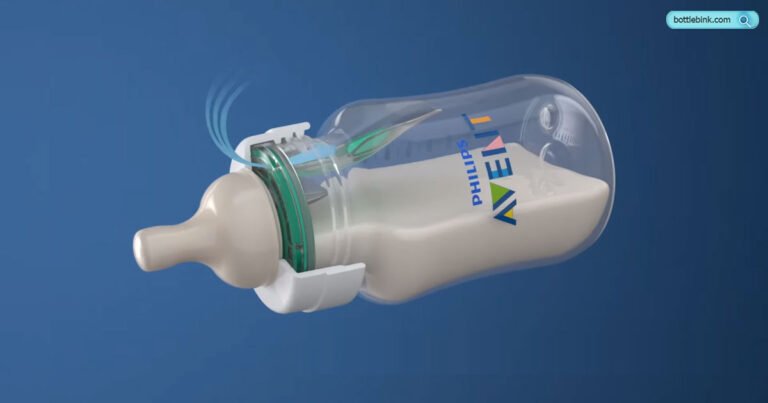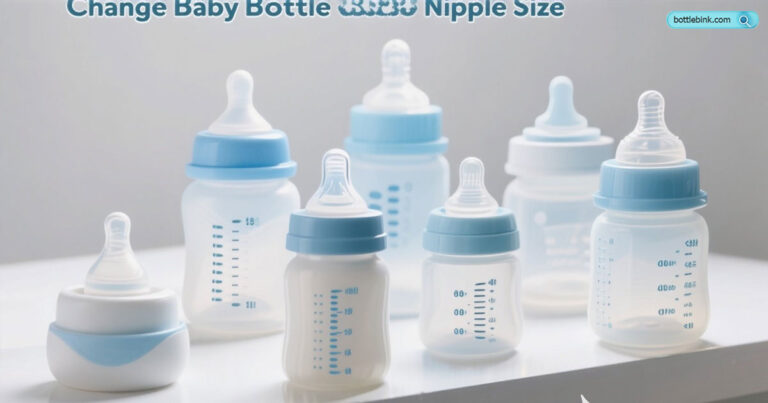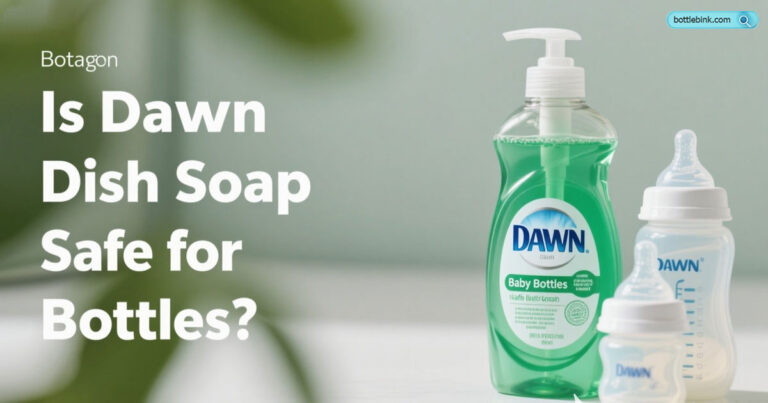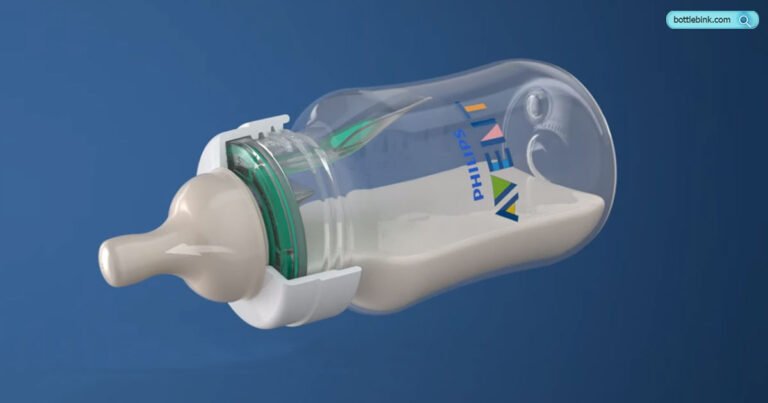When to Introduce a Bottle to a Breastfed Baby?
Introducing a bottle to a breastfed baby can feel like a big step for new parents. You might be wondering when the right time is, how to do it smoothly, or if it’ll mess up your breastfeeding routine. Don’t worry—this guide is here to help you navigate this transition with confidence. Written in a friendly, easy-to-read way, this article breaks down everything you need to know about introducing a bottle to your breastfed baby. From timing to tips, we’ve got you covered!
Why Introduce a Bottle to a Breastfed Baby?
Breastfeeding is a beautiful way to bond with your baby, but there are plenty of reasons you might want to introduce a bottle. Maybe you’re heading back to work, need a break, or want your partner to share feeding duties. A bottle can give you flexibility while still ensuring your baby gets the nutrition they need. Plus, it can help your baby get used to different feeding methods, which is handy for daycare or babysitters.
The key is to introduce the bottle thoughtfully to avoid disrupting breastfeeding. Babies can sometimes prefer the bottle’s faster flow, so timing and technique matter. Let’s dive into the details to make this process as smooth as possible.
When Is the Best Time to Introduce a Bottle?

Timing is everything when it comes to introducing a bottle to a breastfed baby. Experts generally recommend waiting until breastfeeding is well-established, which usually takes about 4 to 6 weeks. By this time, your milk supply is steady, and your baby has mastered latching onto the breast. Introducing a bottle too early might lead to nipple confusion, where babies struggle to switch between breast and bottle. On the other hand, waiting too long (past 8 weeks) could make your baby resistant to the bottle.
Every baby is different, so watch for signs that your baby is ready. If they’re latching well and you’re producing enough milk, it might be a good time to try. Always check with your pediatrician for advice tailored to your baby’s needs.
Age | Readiness for Bottle Introduction | Things to Consider |
|---|---|---|
0-2 weeks | Not recommended | Focus on establishing breastfeeding to build milk supply. |
3-4 weeks | Possible for some babies | Ensure breastfeeding is going smoothly before trying. |
4-6 weeks | Ideal time for most babies | Breastfeeding is usually established; risk of nipple confusion decreases. |
6+ weeks | Still okay, but monitor for resistance | Babies may prefer breast and resist bottle if introduced too late. |
How to Choose the Right Bottle and Nipple
Picking the right bottle and nipple can make a big difference in how well your baby takes to it. With so many options out there, it can feel overwhelming, but don’t stress! The goal is to find a bottle that mimics the breast to make the transition easier.
Look for Bottles Designed for Breastfed Babies
Some bottles are specifically made to feel like breastfeeding. These often have wide, soft nipples that resemble the shape and feel of a mother’s breast. Brands like Comotomo, Dr. Brown’s, or Lansinoh are popular choices. Look for bottles with anti-colic features to reduce gas and fussiness.
Choose a Slow-Flow Nipple
A slow-flow nipple is key for breastfed babies because it mimics the slower flow of breast milk. This helps prevent your baby from getting used to a faster flow, which could make them fussy at the breast. Most bottles come with nipple flow levels (like Level 1 for newborns), so start with the slowest option.
Consider Your Baby’s Preferences
Every baby is unique, so you might need to try a couple of bottles to find the one your baby likes. Some babies prefer silicone nipples over latex, while others are pickier about shape. Be patient—it’s normal to experiment a bit.
Bottle Feature | Why It Matters | Examples |
|---|---|---|
Wide-base nipple | Mimics breast shape | Comotomo, Tommee Tippee |
Slow-flow nipple | Matches breast milk flow | Dr. Brown’s, Philips Avent |
Anti-colic vent | Reduces gas and discomfort | Lansinoh, Munchkin Latch |
Step-by-Step Guide to Introducing a Bottle

1. Start Slowly
The key to a smooth transition is gradual introduction. The best way to start is to offer the bottle once a day. Choose a time when your baby isn’t overly hungry or upset, as a calm and relaxed baby is more likely to accept the bottle.
2. Timing Matters
Make sure to introduce the bottle at the right time. Don’t wait until your baby is starving. If they’re already very hungry, they might get frustrated and refuse the bottle. Instead, try offering the bottle after a regular breastfeeding session when the baby is content but not too hungry.
3. Let Someone Else Offer the Bottle
Babies often associate their mothers with breastfeeding, so when you’re introducing a bottle, it’s a good idea for someone else to offer it. This allows your baby to focus on the bottle and not on the breast, making the transition easier.
4. Mimic Breastfeeding as Much as Possible
Hold your baby in a similar position to how you would while breastfeeding. Maintain eye contact and comfort them while feeding. This will make the bottle-feeding experience feel more familiar and secure to your baby.
5. Be Patient
Introducing a bottle can take time, and it’s important to remain patient. Don’t force the bottle into your baby’s mouth. If they refuse, try again later or the next day. Some babies may take a few tries before they get the hang of it.
Tips to Avoid Nipple Confusion
Nipple confusion happens when a baby struggles to switch between breast and bottle because of differences in sucking techniques. While not every baby experiences it, here are some tips to minimize the risk.
Stick to Breastfeeding First
For the first few weeks, focus on breastfeeding to build a strong foundation. Once breastfeeding is going well, introduce the bottle gradually. For example, offer one bottle feeding every few days while continuing to breastfeed regularly.
Use Paced Bottle Feeding
Paced bottle feeding mimics the slower flow of breastfeeding. Hold the bottle horizontally so the milk doesn’t flow too fast, and pause every few sucks to let your baby control the pace. This helps them work for the milk, just like at the breast.
Watch for Signs of Confusion
If your baby starts fussing at the breast or seems frustrated, they might be experiencing nipple confusion. Go back to breastfeeding for a few days and try the bottle again later. Staying calm and patient will help both of you.
How to Maintain Your Milk Supply
Introducing a bottle doesn’t mean you have to stop breastfeeding. In fact, you can keep your milk supply strong with a few simple strategies.
Pump Regularly
If you’re replacing a breastfeeding session with a bottle, pump at the same time to maintain your supply. For example, if your baby gets a bottle at 10 a.m., pump around that time to signal your body to keep producing milk.
Breastfeed When Possible
Continue breastfeeding as much as you can, especially in the early weeks. The more your baby nurses, the more milk your body will produce. Even one or two breastfeeding sessions a day can help maintain your supply.
Stay Hydrated and Rested
Your milk supply depends on your overall health. Drink plenty of water, eat nutritious foods, and get as much rest as possible (we know, easier said than done!). Stress can also affect your supply, so try to relax during pumping or feeding.
Tip | How It Helps | How Often |
|---|---|---|
Pump after bottle feeding | Maintains milk production | Every time you replace a breastfeeding session |
Breastfeed on demand | Keeps supply steady | As often as baby wants |
Stay hydrated | Supports milk production | Drink 8-10 glasses of water daily |
Common Challenges and How to Overcome Them
Introducing a bottle isn’t always smooth sailing, but most challenges can be tackled with a little know-how.
Baby Refuses the Bottle
If your baby won’t take the bottle, don’t panic. Try warming the nipple slightly (not too hot!) to make it feel more like the breast. You can also dip the nipple in breast milk to entice them. If they’re still resistant, try a different bottle or nipple and give it time.
Baby Prefers Bottle Over Breast
Sometimes, babies start to prefer the bottle because milk flows faster. To avoid this, use a slow-flow nipple and practice paced feeding. You can also increase skin-to-skin contact during breastfeeding to make it more appealing.
Low Milk Supply
If you notice your milk supply dropping, pump more often and breastfeed when you can. Check with a lactation consultant for personalized tips. They can also help you troubleshoot any latch or feeding issues.
When to Seek Help
If you’re struggling with introducing a bottle or maintaining your milk supply, don’t hesitate to reach out for support. A pediatrician or lactation consultant can offer expert advice. They can also check for issues like tongue-tie or latch problems that might be affecting feeding.
You can also join local parenting groups or online forums for tips from other moms. Sharing experiences can make you feel less alone and give you practical ideas to try.
Frequently Asked Questions About Introducing a Bottle to a Breastfed Baby
When should I start giving my breastfed baby a bottle?
The best time is usually between 4-6 weeks, once breastfeeding is established. This helps avoid nipple confusion while ensuring your baby is open to trying a bottle.
Can introducing a bottle affect breastfeeding?
If done carefully, introducing a bottle shouldn’t disrupt breastfeeding. Use slow-flow nipples and paced feeding to mimic the breast, and continue breastfeeding regularly.
What if my baby refuses the bottle?
Try different bottles, warm the nipple, or have someone else offer it. Be patient and keep trying every few days. Babies often need time to adjust.
How do I know if my baby has nipple confusion?
Signs include fussiness at the breast, trouble latching, or preferring the bottle. If you notice these, focus on breastfeeding for a few days before trying the bottle again.
How can I maintain my milk supply while using a bottle?
Pump every time you give a bottle to replace a breastfeeding session. Breastfeed as often as possible and stay hydrated to keep your supply strong.
What type of bottle is best for a breastfed baby?
Look for bottles with wide, soft nipples and slow-flow settings, like Comotomo or Dr. Brown’s. These mimic the breast and reduce the risk of nipple confusion.
Can I use formula in the bottle instead of breast milk?
Yes, you can use formula if needed, but start with breast milk to keep things familiar. Talk to your pediatrician about choosing the right formula.
Final Words
Introducing a bottle to your breastfed baby is a big milestone, but it doesn’t have to be stressful. By waiting until breastfeeding is established, choosing the right bottle, and using techniques like paced feeding, you can make the transition smooth for both you and your baby. Be patient, stay flexible, and don’t hesitate to ask for help if you need it. With a little time and practice, you’ll find a routine that works for your family. Happy feeding!






